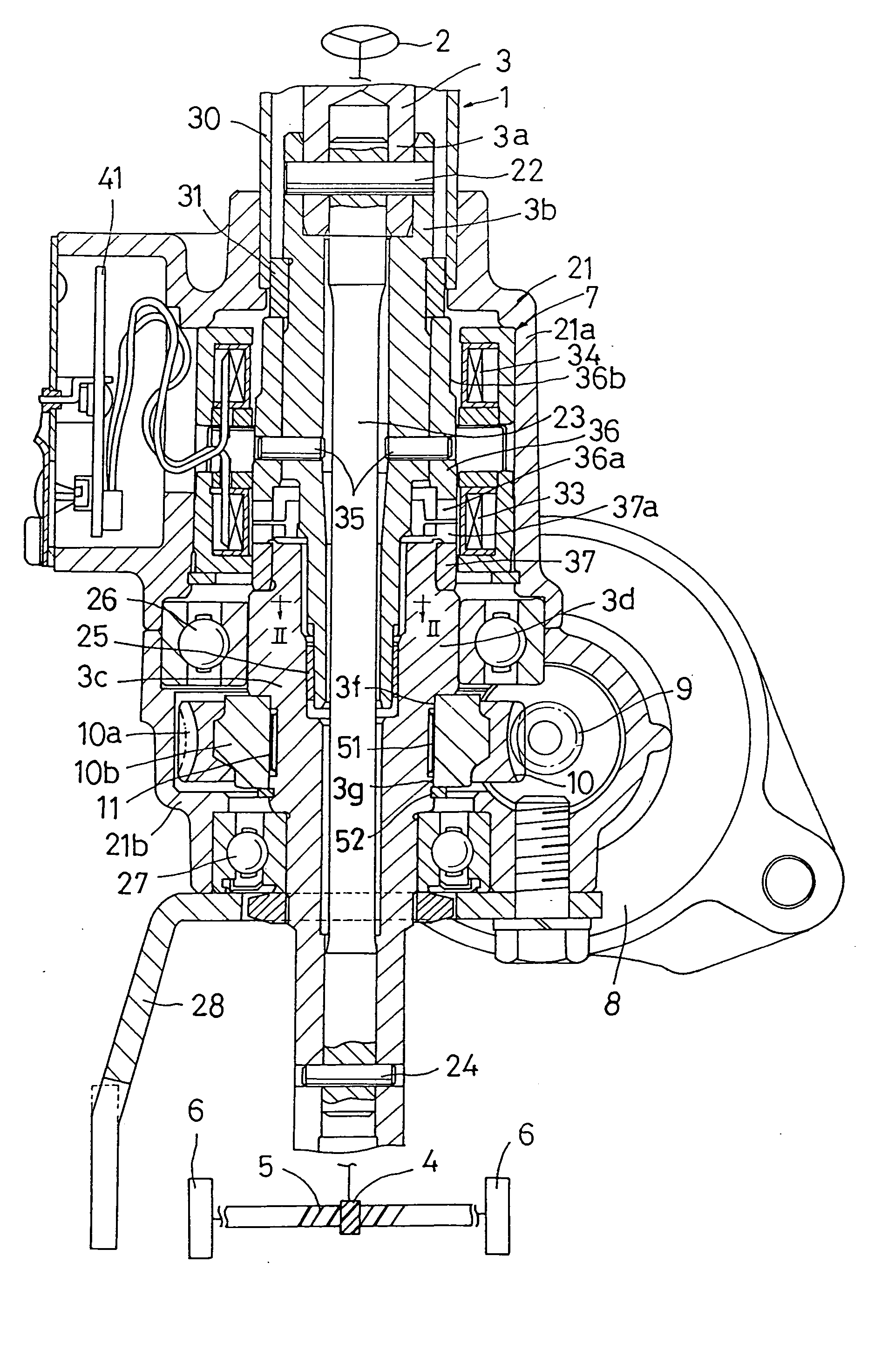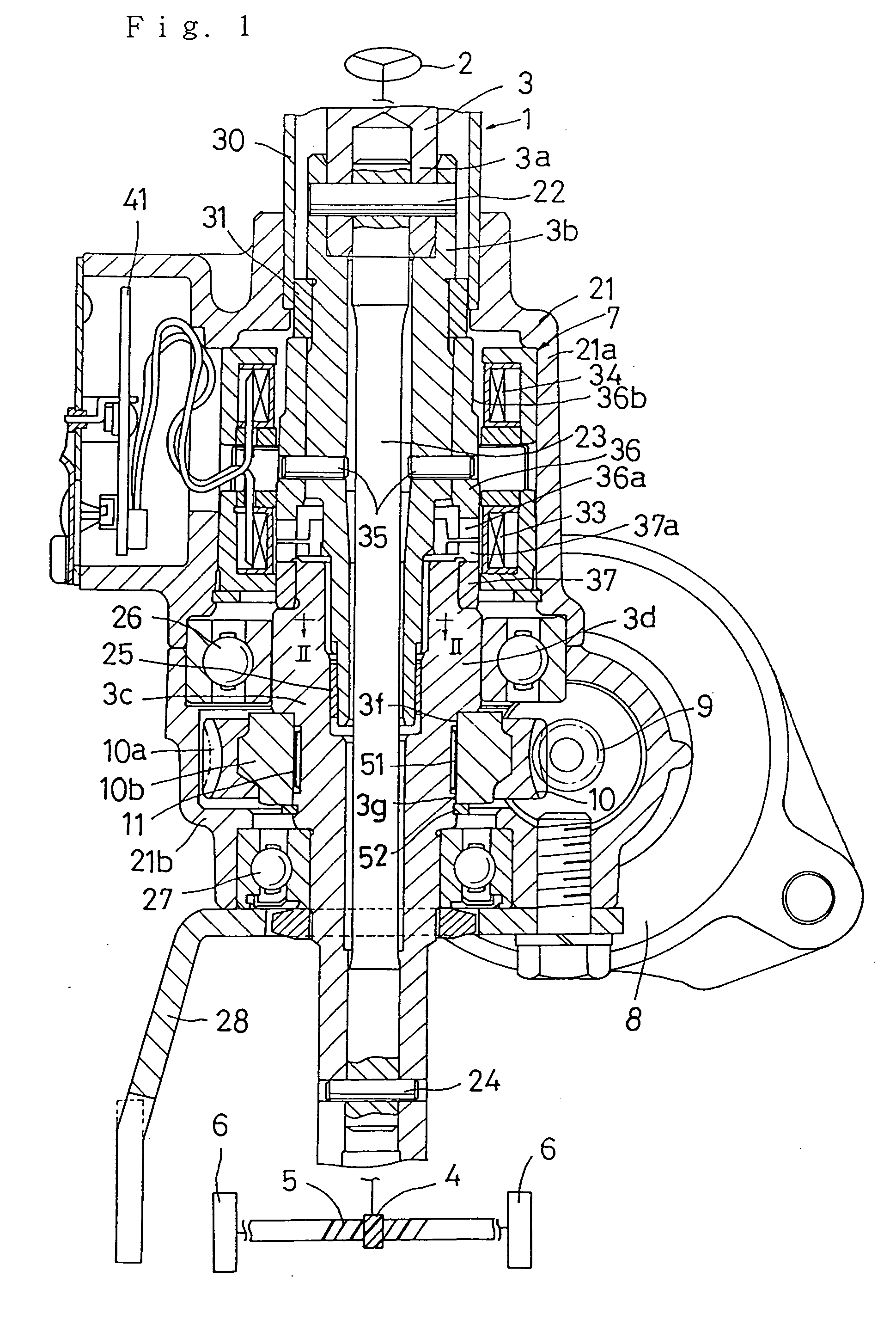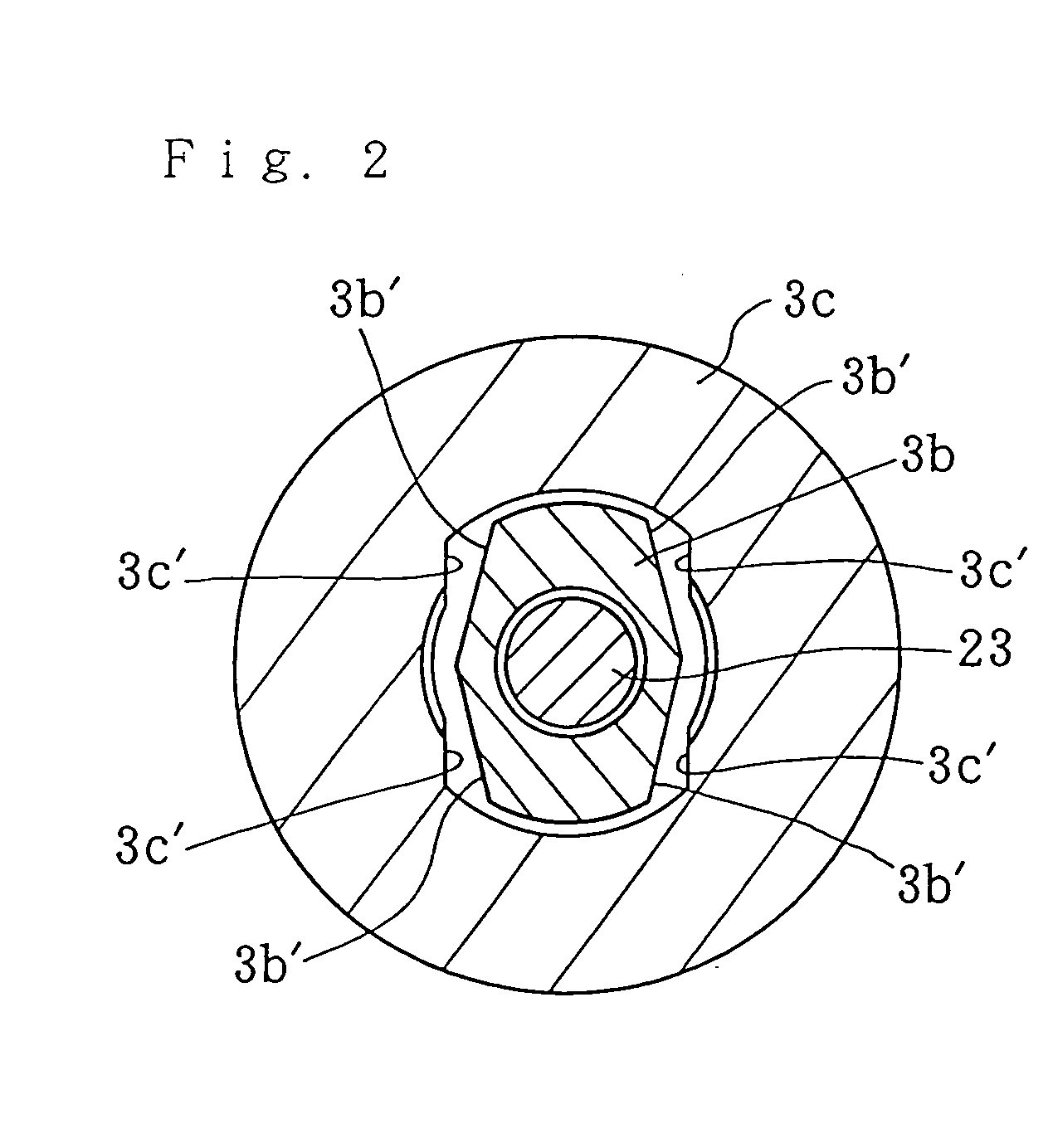Motor operated power steering device
a technology of power steering and motor, which is applied in the direction of couplings, vehicle sub-unit features, and slipcouplings, etc., can solve the problems of steering wheel being unusable, motor damage serious, and preventing the operation of the motor, so as to achieve the required level of precision with ease, and prevent the effect of axial orientation
- Summary
- Abstract
- Description
- Claims
- Application Information
AI Technical Summary
Benefits of technology
Problems solved by technology
Method used
Image
Examples
Embodiment Construction
[0041] The following section provides a detailed description of the first preferred embodiment of the present invention by reference to FIGS. 1 to 6 below.
[0042] The motor operated power steering device 1 shown in FIG. 1 transmits steering torque, which is generated by turning the steering wheel 2, by way of a steering shaft 3 to a pinion 4. The transmission of the steering torque causes movement in a rack 5 which meshes with the pinion 4. This varies the steering angle of the road wheels 6 which are linked to the rack 5 by way of tie-rods, knuckle arms, and the like (omitted from the drawing).
[0043] To supply steering assistance force in accordance with the steering torque transmitted by the steering shaft 3, a torque sensor 7, which detects the steering torque, a steering assistance motor 8, which is driven in accordance with the detected steering torque, and a worm 9 and worm wheel 10, whose function is to transmit the rotational force of the motor 8 to the steering shaft 3, ar...
PUM
 Login to View More
Login to View More Abstract
Description
Claims
Application Information
 Login to View More
Login to View More - R&D
- Intellectual Property
- Life Sciences
- Materials
- Tech Scout
- Unparalleled Data Quality
- Higher Quality Content
- 60% Fewer Hallucinations
Browse by: Latest US Patents, China's latest patents, Technical Efficacy Thesaurus, Application Domain, Technology Topic, Popular Technical Reports.
© 2025 PatSnap. All rights reserved.Legal|Privacy policy|Modern Slavery Act Transparency Statement|Sitemap|About US| Contact US: help@patsnap.com



